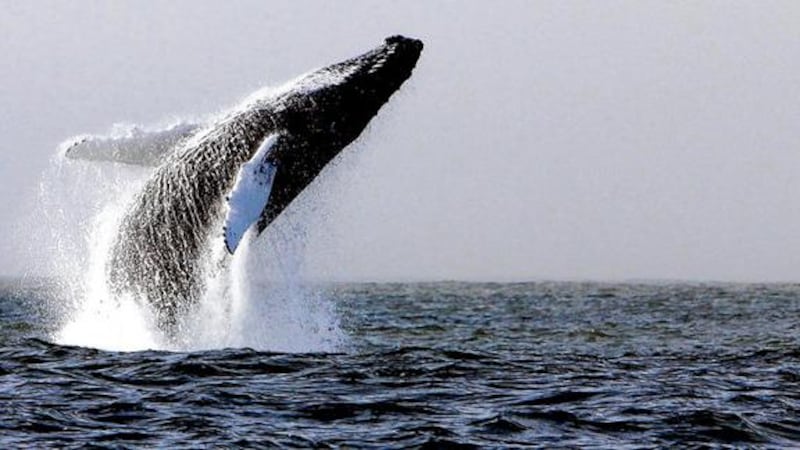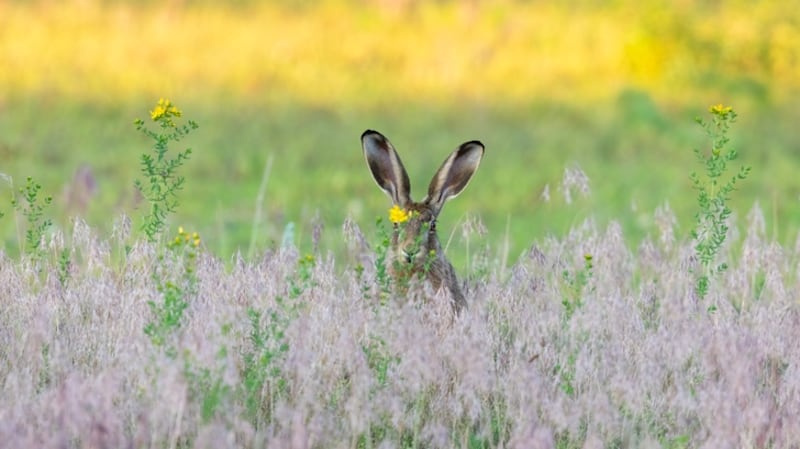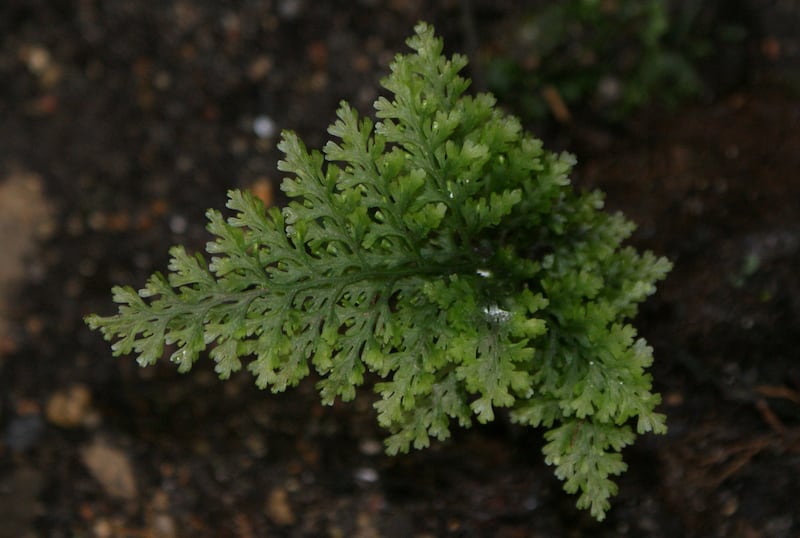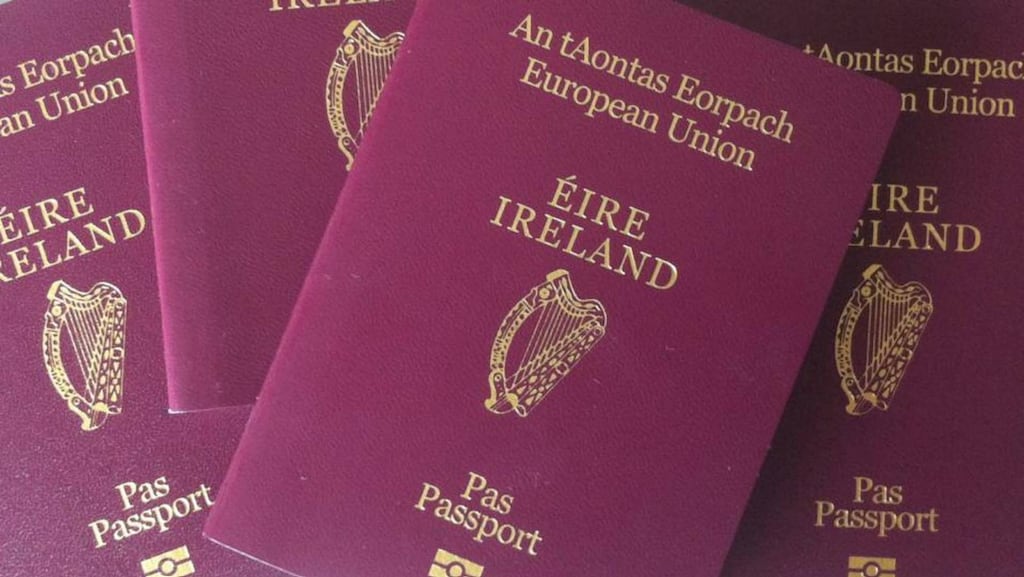Wolfhound or the Irish hare, shamrock or St Patrick’s cabbage? What should be used to illustrate the new Irish passport?
Now you can have your say after the Department of Foreign Affairs opened its public consultation on the design of a new Irish passport on Wednesday.
The Irish passport – and card – is to be given a new theme with a redesign relating to the country’s natural environment. The current passport book is 10 years old, and the International Civil Aviation Authority recommends documents undergo frequent revamps to include the latest security features.
In a short, anonymous, online survey, people are asked to chose from a range of animals and plants that may be included on the new design. Participants must also give their age, say whether they live on the island of Ireland or elsewhere and state if they have an Irish passport.
Q&A: How the new gambling regulator will affect Irish punters
‘My son is getting married in the summer, and the likelihood is that I’m going to be able to see that’
‘There is an undercurrent of racism from some people – you can feel it’
Ireland v France: What time is kick-off and what TV channel is it on?
From there, survey participants are given a list of 40 animals, divided up into 10 on four different sections on the survey. In each section, participants are asked to pick their three favourite animals, meaning there is the option to select 12 animals in total.
Animals included on the list include the Irish hare, wolfhound, Connemara pony, bottlenose dolphin, humpback whale, red fox and common lizard.

From there, people are provided with three sections featuring lists of 10 plants each. Once again, in each section participants are invited to chose their three favourite options. Included on the lists are plants such as wood garlic, water forget-me-nots and the shamrock.
The survey advises the lists are “not intended to be exhaustive”. At the end of the survey, there is an opportunity to suggest other animals, plants or other aspects of Ireland that could be explored as part of the new passport-design process.
The public survey will remain open until July 12th.
As well as deciding on the design, a new passport procurement process will also have to be run to appoint a passport manufacturer. This will likely happen later in the year, and the new passport is expected to be available before the end of 2025.

Collie Ennis, a research associate at Trinity College’s Department of Zoology, welcomed the move to open up the public consultation process. “We’ve thousands of species of animals in the country but 40 animals is a nice selection for people.
“I remember before the euro came in, all our money had animals on them,” said Mr Ennis. “I know people who’ve gotten tattoos of those old coins with the animals on them. It’s nice to have that connection to our land, these species are part of our country. Because we are an island they are different, they behave quite differently here than they would elsewhere. Why wouldn’t you put them on the passport?”
Of the specific animals suggested in the survey, Mr Ennis joked that he doesn’t “know anyone who would want a jellyfish on your passport,” but that the Atlantic salmon and red squirrels were “romantic choices, but they are precious and unique Irish species.”
Mr Ennis said that the common frog was his favourite option because they are “under-appreciated and beautiful creatures.”
“Frogs are a gateway for a lot of people to appreciated wildlife. Everyone has collected tadpoles and watched them develop. I do a lot of conservation work and when you want to draw people in to that process, to engage with wildlife in their garden, you remind them how they used to see frog spawn as children.
“The common frog is very beautiful and very under-appreciated. I’d love to have them on my passport.”
Dr Zoe Popper, a lecturer of botany at University of Galway, welcomed the decision to include Irish plants on the new passports, but said the choice of species offered to the public was “very east coast orientated.” Dr Popper also said that all those listed by the Department of Foreign Affairs are flowering plants and called on a number of species found in the Burren to be included.
“For my mind, I would prefer to see things a little more specific to Ireland or more special for Ireland,” said Dr Popper. “Primroses grow in a lot of places, not just Ireland. Marram grass is again very widely distributed.”

Dr Popper says species such as the Strawberry tree should be included, saying it is “iconic for the west of Ireland and the Burren.” Also known as the Arbutus Unedo, the tree is found in Mediteranean countries as well but Ireland is “the most northerly place it can be found at sea level,” says Dr Popper.
Dryas Octopetala - also known as eightpetal mountain-avens - Gentian and Irish moss, a form of seaweed, were other species that should be included, according to Dr Popper. “I don’t think you should just have flowering plants. Having seaweed would be suitable, and it looks pretty. Killarney fern as well, it looks pretty so it fits the remit.”
Dr Popper also called for pictures of the 30 plant species listed in the public survey to be included as “it’s really important for people to know what they’re voting for.” At present, plant names in English, Irish and Latin are put forward but no imagery is present in the online public consultation.
“I think it’s a really great decision to include plants. Our landscape is something unique. It’s a big reason people come in as tourists, so we should celebrate them. I think it would be really important to have the plant name in English, Irish and Latin with a picture alongside.”













